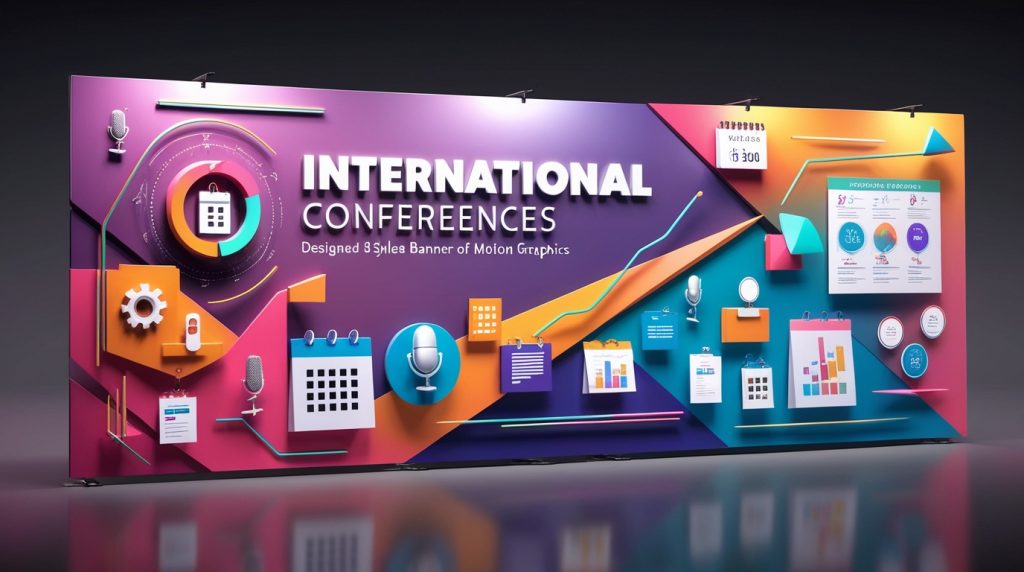The modern conference room has evolved far beyond a simple space with chairs and a projector. In 2025, it represents the heart of collaboration, innovation, and organizational culture. As hybrid work becomes the norm, the conference room must now balance in-person interaction, remote collaboration, and digital inclusivity — all while maintaining comfort and security.
According to a Gartner workplace study, 80% of global organizations now rely on hybrid meeting setups, and nearly half plan to redesign their conference rooms by 2026. This shift highlights an essential truth: the conference room has become a strategic business asset.
In this in-depth guide, we’ll explore how to design an effective conference room, integrate cutting-edge technology, manage hybrid meetings, and prepare for future trends shaping professional meeting spaces.
Why the Conference Room Still Matters in a Digital Age
While virtual meetings have become common, the need for physical gathering spaces has never disappeared. Conference rooms provide something digital platforms can’t fully replicate — presence, trust, and engagement.
Here’s why a well-designed conference room remains essential:
- Facilitates meaningful collaboration – Teams brainstorm better in environments that support human connection.
- Reinforces brand image – Visitors and clients often judge a company by its meeting spaces.
- Enhances productivity – A functional setup minimizes tech friction and keeps discussions focused.
- Supports hybrid operations – Modern rooms are equipped to include remote participants seamlessly.
- Ensures data security – In controlled spaces, sensitive discussions stay confidential.
Whether in corporate headquarters, universities, or research institutions, the conference room serves as the nerve center of communication.
1. Conference Room Design: Where Function Meets Aesthetics
Designing the perfect conference room is both an art and a science. It’s about creating an environment that encourages collaboration while reinforcing professionalism and comfort.
1.1. Layout and Space Planning
The layout determines the flow of conversation and energy in the room. Common configurations include:
- Boardroom Style: Ideal for formal meetings; fosters equality and visibility.
- U-Shape or Horseshoe: Great for presentations or workshops.
- Classroom Style: Best for training sessions or lectures.
- Cluster Seating: Encourages group work and interactive sessions.
Tip: Ensure at least 25–35 square feet per attendee for optimal comfort.
1.2. Furniture and Ergonomics
Ergonomic furniture improves focus and reduces fatigue. Look for:
- Adjustable chairs with lumbar support.
- Modular tables for reconfiguration.
- Integrated power outlets and wireless charging.
- Cable management systems for clutter-free setups.
1.3. Lighting and Acoustics
Lighting and sound are crucial to user experience:
- Use indirect lighting and adjustable brightness to avoid glare.
- Add acoustic panels or wall insulation to reduce echo.
- Ensure microphones capture voices clearly, even in larger spaces.
- Use soundproof materials to prevent distraction.
A well-lit, acoustically tuned conference room encourages engagement and comfort.
2. Technology Integration: Powering the Modern Meeting
In the era of hybrid collaboration, technology defines the quality of your meetings. A well-equipped conference room blends innovation with simplicity — allowing teams to connect globally without friction.
2.1. Smart Displays and Video Conferencing
Replace old projectors with 4K LED displays or interactive whiteboards that support screen sharing, real-time annotation, and wireless connectivity.
Key features to include:
- Multi-device compatibility (Windows, macOS, Android).
- Integrated cameras and AI-powered speaker tracking.
- Seamless integration with Zoom, Microsoft Teams, or Google Meet.
2.2. Audio Systems and Microphones
Clear audio is the foundation of effective communication. Choose high-quality systems with:
- Omnidirectional microphones for 360° pickup.
- Echo cancellation and noise suppression.
- Ceiling-mounted speakers for even sound distribution.
For large spaces, consider beamforming microphones that isolate voices and reduce background noise.
2.3. Connectivity and Wireless Infrastructure
A fast, reliable network ensures meetings run without interruption.
- Implement enterprise-grade Wi-Fi 6 or higher.
- Offer multiple connectivity options (HDMI, USB-C, AirPlay, Miracast).
- Install network redundancy for fail-safe communication.
2.4. Automation and AI Integration
Smart conference rooms now use AI-powered assistants to automate scheduling, lighting, and recording:
- Voice-activated commands like “Start meeting” or “Dim lights.”
- Facial recognition to log attendance.
- Automatic transcription and meeting notes.
- Environmental sensors that adjust temperature and lighting.
This technology enhances convenience while maintaining data security and compliance.
3. The Rise of the Hybrid Conference Room
3.1. What Is a Hybrid Conference Room?
A hybrid conference room bridges in-person and virtual attendees. It ensures equal participation, regardless of location.
3.2. Essential Features
- Multiple cameras to capture all angles.
- Large dual displays: one for content, one for remote participants.
- Integrated collaboration tools like Miro, Slack, or Microsoft Whiteboard.
- Stable bandwidth to support simultaneous video feeds.
3.3. Hybrid Etiquette and Inclusivity
Inclusivity is key to hybrid meeting success.
- Assign a meeting facilitator to balance remote and in-person voices.
- Use AI captioning for accessibility.
- Record sessions for participants in different time zones.
3.4. Benefits for Businesses
- Reduced travel costs.
- Access to a global talent pool.
- Environmentally friendly — fewer flights, less carbon output.
Hybrid rooms are redefining teamwork, making global collaboration effortless.
4. Sustainability and Wellness in Conference Room Design
4.1. Green Materials and Energy Efficiency
Modern businesses prioritize eco-friendly design.
- Use recycled materials for furniture and décor.
- Install energy-efficient LEDs and motion sensors.
- Integrate HVAC systems with smart thermostats.
- Opt for natural light whenever possible.
4.2. Biophilic Design and Human Wellbeing
Biophilic elements — like greenery, wooden textures, and natural colors — improve mood and productivity.
Studies show employees in nature-inspired spaces experience a 15% increase in well-being and creativity.
4.3. Air Quality and Comfort
A comfortable environment boosts focus:
- Use air purifiers and CO₂ sensors.
- Maintain an ambient temperature (20–23°C / 68–73°F).
- Provide adjustable seating and climate controls.
The sustainable conference room is not just energy-efficient — it’s people-centric.
5. Data Security and Privacy in the Conference Room
As meetings increasingly involve sensitive data, cybersecurity is as critical as physical design.
Key Security Practices:
- Implement secure access (keycards, biometric scanners).
- Encrypt all communications during video calls.
- Restrict external devices via network segmentation.
- Regularly update firmware for all AV equipment.
- Disable recording features for confidential sessions.
Companies in regulated industries (finance, defense, healthcare) must also ensure compliance with frameworks like ISO/IEC 27001 or GDPR.
6. Trends Defining the Future of Conference Rooms
The future is intelligent, immersive, and inclusive. Here’s what to expect in the next decade.
6.1. AI-Powered Meeting Rooms
Artificial Intelligence will manage end-to-end meeting logistics:
- Predict meeting duration and optimize energy usage.
- Generate real-time summaries and action points.
- Recognize recurring attendees for personalization.
6.2. Extended Reality (XR) and 3D Collaboration
Virtual and augmented reality will revolutionize how teams present and brainstorm:
- 3D visualization for complex data and product demos.
- Virtual “walkthroughs” of architectural designs or simulations.
- Holographic telepresence for executives and scientists.
6.3. Modular and Flexible Spaces
Static meeting rooms are giving way to adaptable ecosystems:
- Movable walls for breakout sessions.
- Foldable furniture for dynamic layouts.
- “Pop-up” conference pods for smaller group collaborations.
6.4. Touchless Technology
Health-conscious environments are adopting contactless interfaces:
- Automatic doors, sensors, and gesture controls.
- QR-based check-ins and digital whiteboards.
These innovations not only improve hygiene but streamline user experience.
7. Measuring the ROI of a Conference Room
A conference room’s success isn’t only aesthetic — it’s measurable.
Metrics to Track:
- Utilization Rate: How often is the room used?
- Meeting Start Time: Delays indicate tech friction.
- User Feedback: Gather satisfaction scores after meetings.
- Energy Consumption: Evaluate efficiency of lighting and HVAC.
- Collaboration Quality: Analyze outcomes and engagement from hybrid sessions.
Smart analytics dashboards now help facility managers optimize usage, reduce costs, and justify future upgrades.
Frequently Asked Questions (FAQ)
1. What makes a good conference room?
A good conference room balances design, technology, and comfort. It should support hybrid meetings, offer reliable connectivity, and enhance collaboration.
2. How big should a conference room be?
Allow 25–35 sq ft per attendee. For example, a 10-person room should be around 300 sq ft for optimal comfort.
3. What technology is essential for a modern meeting room?
Must-haves include a large LED display, video conferencing tools, wireless connectivity, high-quality microphones, and AI-based automation.
4. How can I make my conference room eco-friendly?
Use sustainable materials, LED lighting, smart HVAC, and paperless workflows. Incorporate plants and natural lighting to improve wellness.
5. What is a hybrid conference room?
A hybrid conference room connects both in-person and remote participants using cameras, digital screens, and collaboration software.
6. How do I ensure data security during meetings?
Use encrypted platforms, secure access controls, and disable recording functions when discussing confidential matters.
7. How often should conference room technology be updated?
Every 4–5 years for core hardware, with annual software updates and periodic security patches to maintain performance.
Conclusion: Redefining the Conference Room for a New Era
The conference room has transformed from a static meeting space into a dynamic ecosystem of ideas, innovation, and inclusivity. As organizations evolve, so must their collaboration environments — integrating technology, design, and human comfort in equal measure.
Whether you’re an event planner, academic institution, or business leader, investing in a well-equipped conference room means investing in productivity, brand credibility, and employee satisfaction.
The future of meetings is hybrid, intelligent, and sustainable — and the time to upgrade is now.
👉 Ready to explore upcoming global conferences or design inspiration? Visit ConferencesDaily.com to connect with experts and stay ahead of every trend in event innovation.















